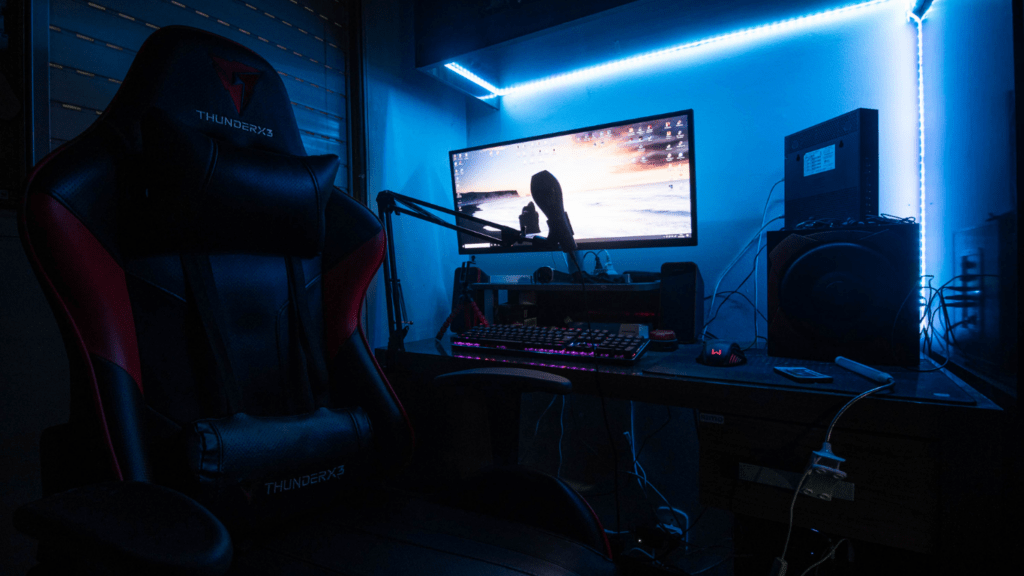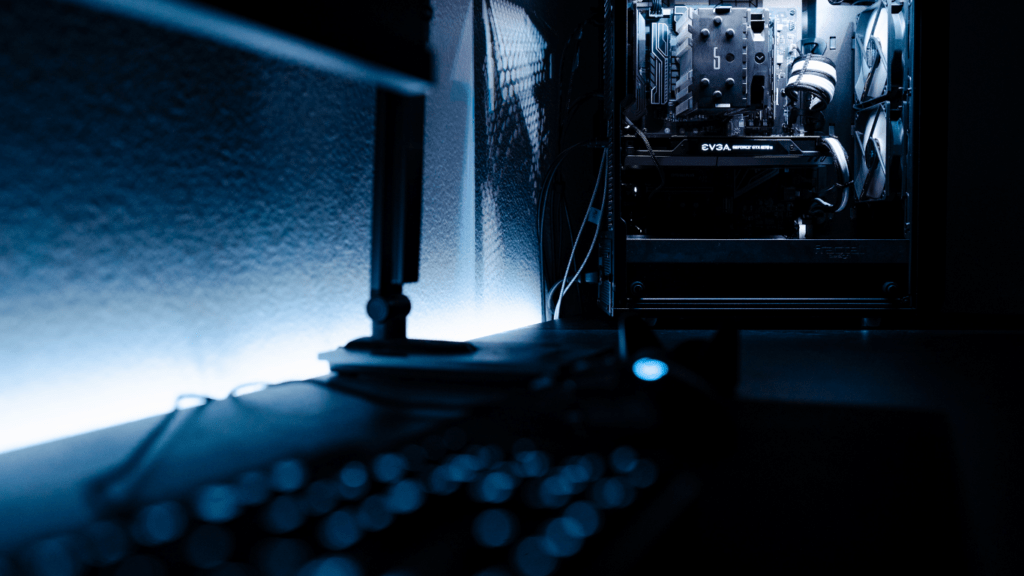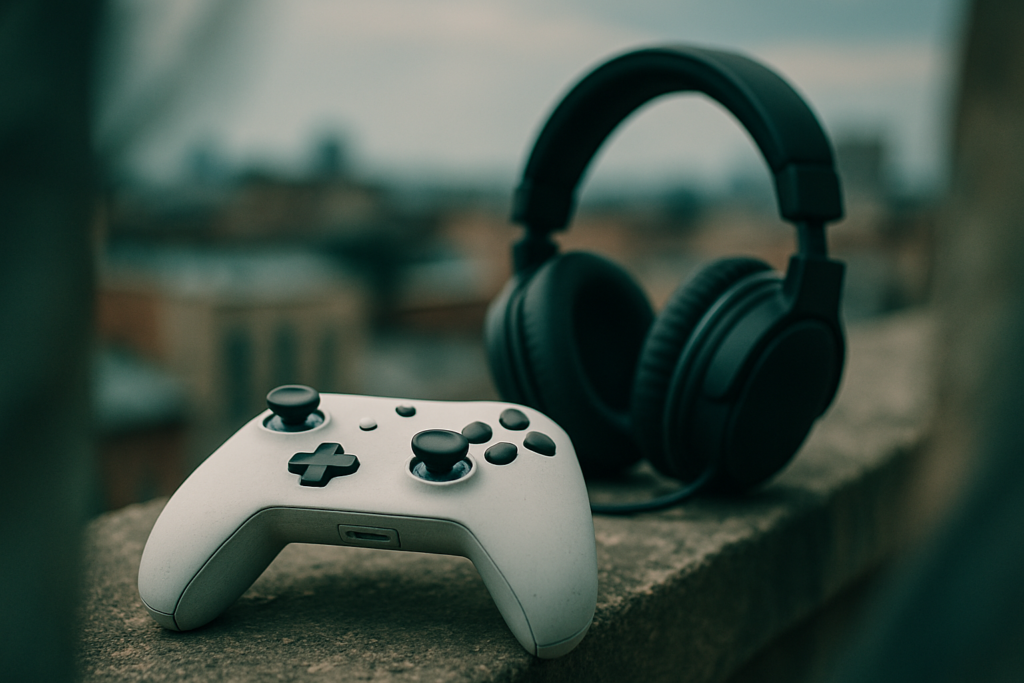The Role of AI in Enhancing Gaming Hardware Performance
1.Current Gaming Hardware Limitations
Modern gaming hardware faces several limitations that affect performance. Heat generation, power consumption, and bottlenecks in data processing hinder optimal functionality.
As games demand more resources, these issues become more pronounced. Grafik processing units (GPUs) and central processing units (CPUs) often struggle to keep up, leading to lag and reduced frame rates.
Additionally, fixed resource allocation often results in underutilized hardware during non-peak loads.
2. AI Innovations in Gaming Hardware
AI’s introduction into gaming hardware is transforming performance dynamics. Machine learning algorithms optimize real-time resource allocation, ensuring GPUs and CPUs operate efficiently under varying loads.
AI-powered thermal management systems, such as NVIDIA’s DLSS technology, predict and mitigate heat buildup, maintaining performance over longer periods.
Real-time performance monitoring adjusts settings dynamically, minimizing lag and maximizing frame rates.
AI-driven predictive maintenance helps identify potential hardware failures, extending the lifespan of gaming components.
Impact of AI on Graphics Processing Units (GPUs)
1. AI-Driven Graphics Optimization
AI-driven graphics optimization has significantly boosted GPU performance by enhancing rendering techniques.
Machine learning algorithms now analyze frame rates and graphical settings in real time.
They then adjust these settings to maintain optimal performance without compromising visual quality.
For example, NVIDIA’s DLSS (Deep Learning Super Sampling) uses AI to render beautiful, high-resolution images while conserving processing power.
This technology enables GPUs to provide smoother frame rates and better visual fidelity, enhancing the overall gaming experience.
2. Real-Time Ray Tracing Enhancements
Ray tracing enhances lighting effects in games by simulating how light interacts with objects.
AI has taken this a step further. Real-time ray tracing uses AI algorithms to process complex light patterns efficiently.
For instance, NVIDIA’s RTX GPUs leverage AI to perform ray-tracing calculations more such as:
- quickly
- accurately
- improving reflections
- shadows
- global illumination
These improvements ensure that gamers experience realistic and immersive visuals, making games look closer to real life than ever before.
AI and CPU Performance Enhancement
AI has transformed gaming hardware, and CPUs are no exception. By integrating AI, developers have managed to unlock new levels of performance and efficiency.
Dynamic CPU Optimization Techniques
Dynamic CPU optimization techniques utilize AI to adjust CPU parameters in real time. AI algorithms analyze workload patterns, adjusting clock speeds and power consumption to match the current demand.
For example, when a game scene becomes complex, the AI boosts the CPU’s processing power when the load decreases, it reduces power usage to save energy.
This ensures optimal performance for demanding game sequences while maintaining energy efficiency for less intensive tasks.
Predictive Resource Allocation
Predictive resource allocation leverages AI to anticipate and allocate resources efficiently. AI models predict future workloads by analyzing ongoing processes and historical data.
For instance, if a game frequently encounters particle effects in certain scenes, the AI dedicates more CPU resources to handle these effects before they occur.
This preemptive allocation reduces latency and ensures a smooth gaming experience. By foreseeing resource needs, AI helps maintain consistent performance and reduces the chances of lag or frame drops during gameplay.
Next-Generation AI Gaming Technologies

AI in VR and AR Gaming Hardware
AI plays a crucial role in enhancing VR Virtual Reality and AR Augmented Reality gaming hardware. Integrating AI algorithms improves motion tracking, enabling more precise and fluid head and hand movements.
For example, AI-driven tracking systems can reduce latency to just milliseconds, avoiding motion sickness and enhancing player immersion.
AI also enhances environmental interaction by recognizing and adapting to real-world objects, creating more dynamic and interactive experiences.
AI-powered upscaling ensures that lower-resolution textures still appear crisp and detailed, maintaining visual fidelity without overburdening the hardware.
Hand gesture recognition and voice commands are refined using AI, enabling more intuitive control schemes.
Future Trends in AI-Enhanced Gaming Systems
Emerging trends in AI-enhanced gaming systems promise even more transformative changes. AI-driven adaptive learning systems such as:
- analyze gameplay styles
- tailoring challenges
- experiences to individual players
AI will optimize hardware configurations in real-time, dynamically adjusting settings for peak performance.
Collaborative AI architectures will enable developers to create more ambitious game worlds, with AI managing complex simulations and large-scale interactions seamlessly.
Anticipate advancements in AI-driven procedural content generation, where games will produce unique environments, missions, and narratives on-the-fly, providing virtually infinite replayability.
AI will also enhance predictive maintenance of gaming hardware, diagnosing potential issues before they impact performance.


 Rosendor Smithiery, the founder of Infinity Game Saga, plays a pivotal role in shaping the direction and content of the platform. As the visionary behind the site, Rosendor’s leadership and passion for gaming drive the company’s mission to deliver top-notch gaming coverage. In addition to his executive role, he actively contributes to writing articles, offering his deep insights and expert perspectives on various gaming topics.
Rosendor’s hands-on approach ensures that Infinity Game Saga maintains a high standard of quality and relevance. His articles often explore emerging trends, provide detailed analyses, and offer unique viewpoints on the gaming industry. By blending his leadership with his writing, Rosendor enriches the content and connects with readers, solidifying Infinity Game Saga’s reputation as a leading voice in gaming media.
Rosendor Smithiery, the founder of Infinity Game Saga, plays a pivotal role in shaping the direction and content of the platform. As the visionary behind the site, Rosendor’s leadership and passion for gaming drive the company’s mission to deliver top-notch gaming coverage. In addition to his executive role, he actively contributes to writing articles, offering his deep insights and expert perspectives on various gaming topics.
Rosendor’s hands-on approach ensures that Infinity Game Saga maintains a high standard of quality and relevance. His articles often explore emerging trends, provide detailed analyses, and offer unique viewpoints on the gaming industry. By blending his leadership with his writing, Rosendor enriches the content and connects with readers, solidifying Infinity Game Saga’s reputation as a leading voice in gaming media.
